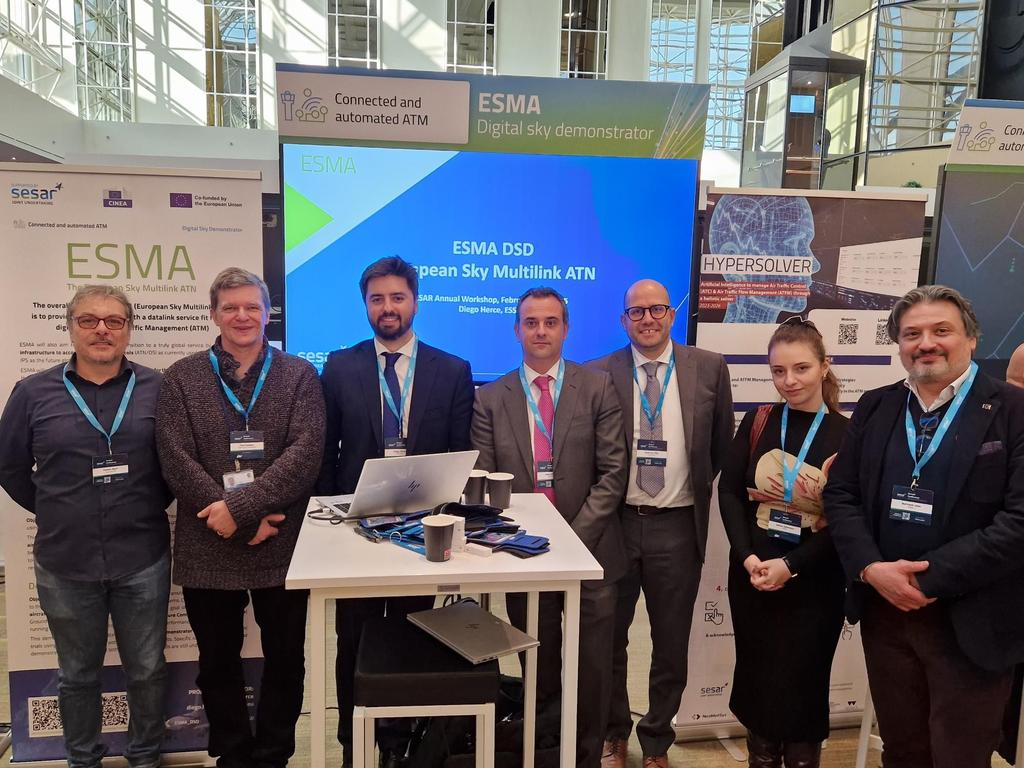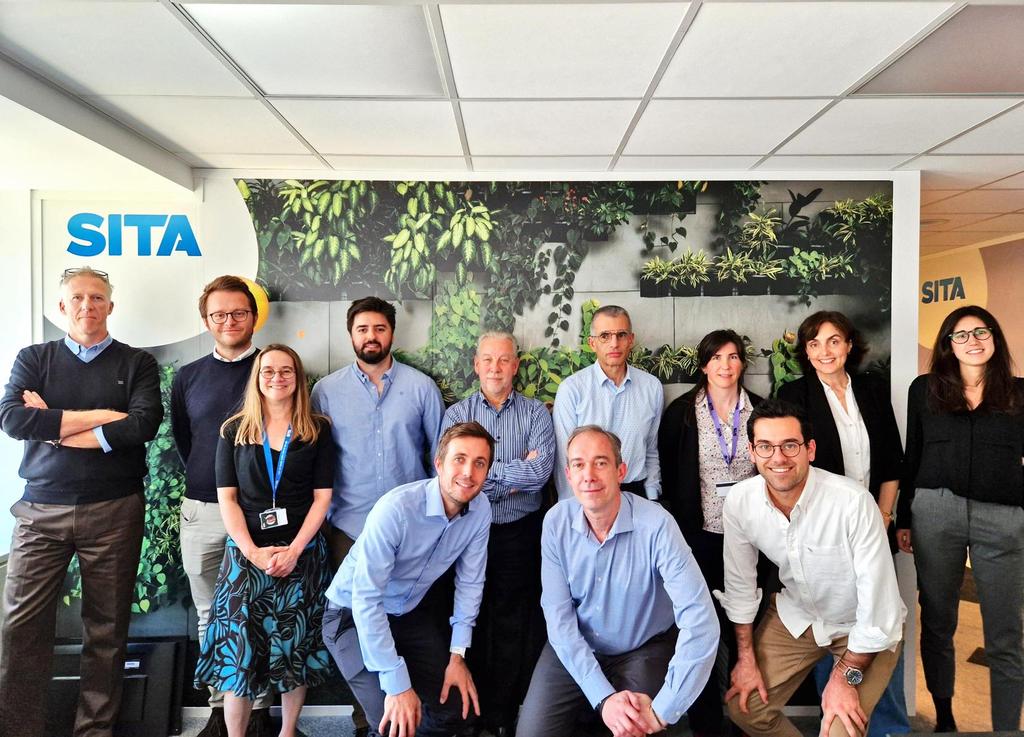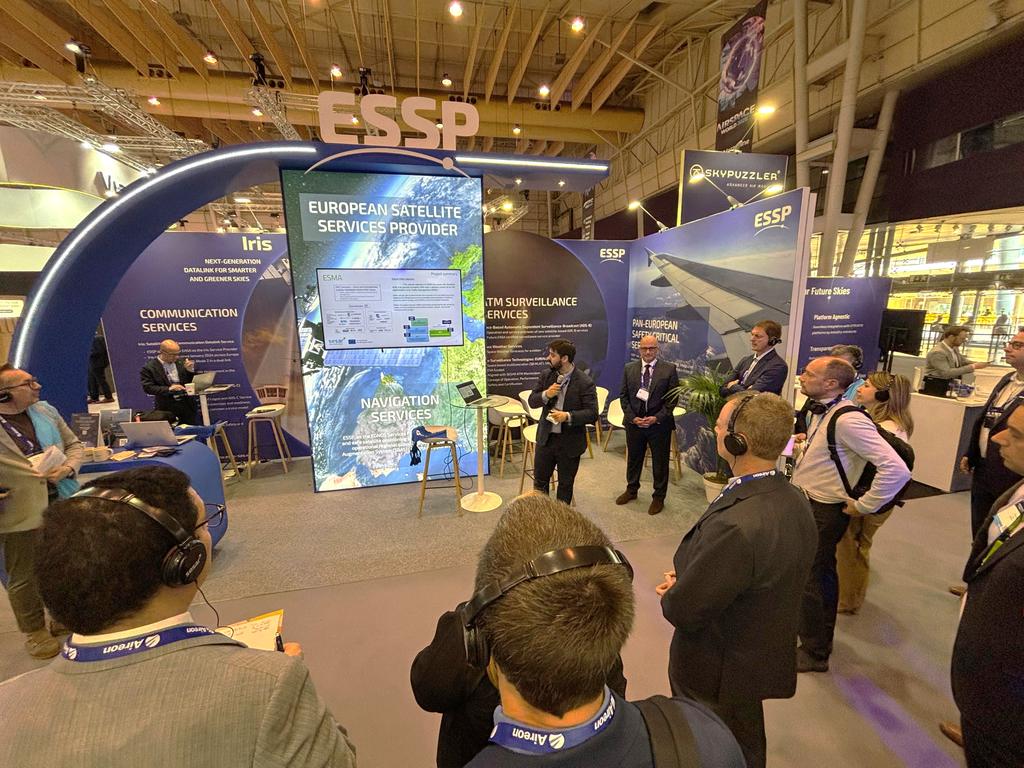The European Sky Multilink ATN (ESMA) project, led by ESSP SAS, is a Digital Sky Demonstrator under Connecting Europe Facility (CEF) 2022, co-financed by the European Climate, Infrastructure and Environment Executive Agency (CINEA) and supported by SESAR Joint Undertaking. The aim of the projects inside this call is to modernize European transport infrastructure, in line with the European Commission’s vision of a future sustainable transport system, with smart and resilient solutions implemented to interconnect Europe.

Summary of the Project
ESMA project addresses the need to increase the level of automation in Air Traffic Management (ATM). This project focuses on demonstrating both a dual link and a multilink service ensuring the seamless link transition between Satcom (Iris) and VDLm2 technologies, and the next steps for a transition to a truly global service by adapting the infrastructure to accommodate both ATN/OSI and ATN/IPS protocols. These activities are divided into two separated demonstrations.
The first demonstration will be focused on the operation of a dual-link communication service, aimed at the seamless link transition between SatCom (Iris) and VDLm2. This demonstration will be based on extensive data collection in a real operational environment with a large number of involved aircraft, properly connected to both links, operating over Europe.
Demonstration 1 data will be enhanced through the collaboration between ESMA and ESA’s Iris programme, led by Viasat, leveraging the expansion of the Iris Dual Link technology.

The second one will perform a multilink demonstration involving the transition between ATN/OSI and ATN/IPS protocols. This demonstration will show the compatibility of IPS-equipped aircraft with OSI-based ground systems together with the goal of developing further the FCI (Future Communication Infrastructure) Ground Backbone running in a near-operational environment to measure its performance.
The future multilink communications infrastructure is key in creating higher levels of automation for ATM given the higher bandwidth and security requirements of the services. Infrastructure will play a key role in supporting the capacity constraints foreseen by the current VDL Mode 2 infrastructure.
Demonstration 2 is made possible through a collaboration with the Iris programme, which ensures the alignment and sharing of results between Boeing’s ecoDemonstrator flight campaigns and the ESMA project.

Partners
ESMA brings together a wide range of partners from across the aviation and technology sectors, including:
- Air Navigation Service Providers (ANSPs)
- Communication Service Providers
- Airlines
- Aircraft manufacturers
The image shows the structure of the project and the different roles of the partners inside the project.

Financed By
The ESMA project is co-financed by the European Union through CINEA (European Climate, Infrastructure and Environment Executive Agency) as part of the Connecting Europe Facility (CEF) program. The project aligns with the EU's goals for a greener, more efficient, and resilient aviation sector.
Budget
The total budget for the ESMA – Digital Sky Demonstrator project is estimated at € 23.420.984,09 with a significant portion being financed by the European Union under the Connecting Europe Facility program of CINEA.

Structure of the Project
The ESMA project is organized into the following key work packages:
1. WP1 - Project Management
2. WP2 - Dual Link ATN/OSI & Multilink ATN/IPS demonstration preparation
- Demonstration requirement specifications and Demonstration Plan.
- Service provision preparation, ATN ground backbone integration and aircraft equipage and management.
3. WP3 - Dual Link ATN/OSI & Multilink ATN/IPS demonstrations
- Demonstration management.
- Data collection and demonstration report.
4. WP4 - Standards and Regulation
5. WP5 - Communication & Dissemination

Achievements
- During the first phase of the project, the Consortium has delivered some of the initial and intermediate versions of its main contractual documents, such as the requirements and demonstration plan, and the first-year progress report.
- Several in person and virtual workshops have been performed to ensure the progress of both solutions.
- Project has been presented in relevant fora such as:
· Airspace World, Geneva 2024
· SESAR Annual Workshop, Brussels 2025
· iCNS, Brussels 2025
· Airspace World, Lisbon 2025
· SESAR Innovation Days, Ljubljana 2025
- ATN ground backbone integration and service provision readiness activities are completed and ready for the demonstration since May 2025.
- On 03 September 2025, the first Transavia aircraft equipped with Iris SatCom capability took off from Paris Orly to Alicante, marking a key milestone for the ESMA Dual Link ATN/OSI demonstration.
- Before these first flights, data collection is ensured since July 2024 thanks to our collaboration with the Iris programme. This will enrich project data with the addition of performance monitoring information from other airlines such as easyJet.

Next Steps
- Demonstration 2 activities are currently focused on the testing of all interfaces involved in the solution. The objective will be to have the system architecture deployed and ready before Boeing ecoDemonstrator flight by mid-November 2025.
- The Project's first dissemination event will take place at Frequentis' headquarters at the end of November 2025, presenting the initial set of project results from both demonstrations.

Useful Links
- CINEA – European Climate, Infrastructure, and Environment Executive Agency
- SESAR Joint Undertaking
- Partner Organizations: European Satellite Services Provider (ESSP), Air France, Airtel Atn , Enaire, Viasat, Frequentis, Eurocontrol, NATS, SITA, Boeing, Airbus, OBIZCO, Transavia, DGAD/DSNA, skyguide
- Iris SatCom
- Follow ESMA on LinkedIn
- Follow ESMA on X
For more information on the ESMA – Digital Sky Demonstrator project, please contact us at communication@essp-sas.eu

